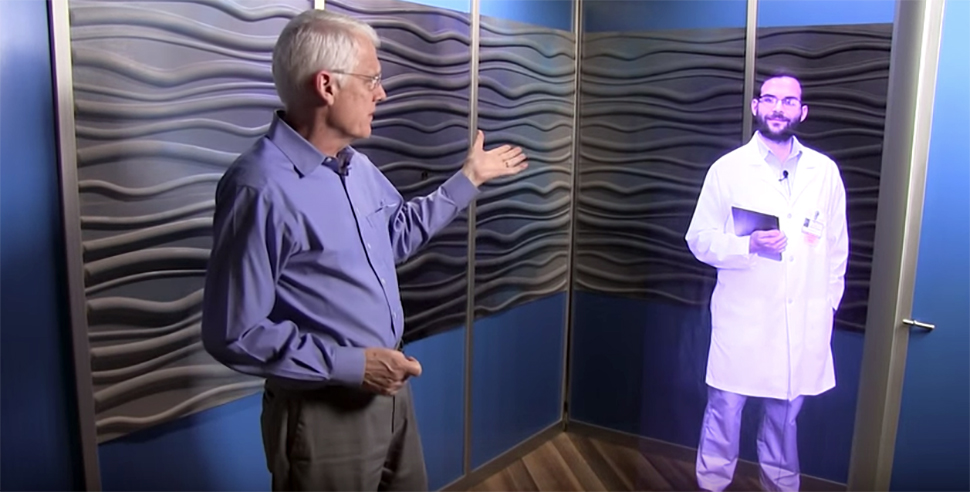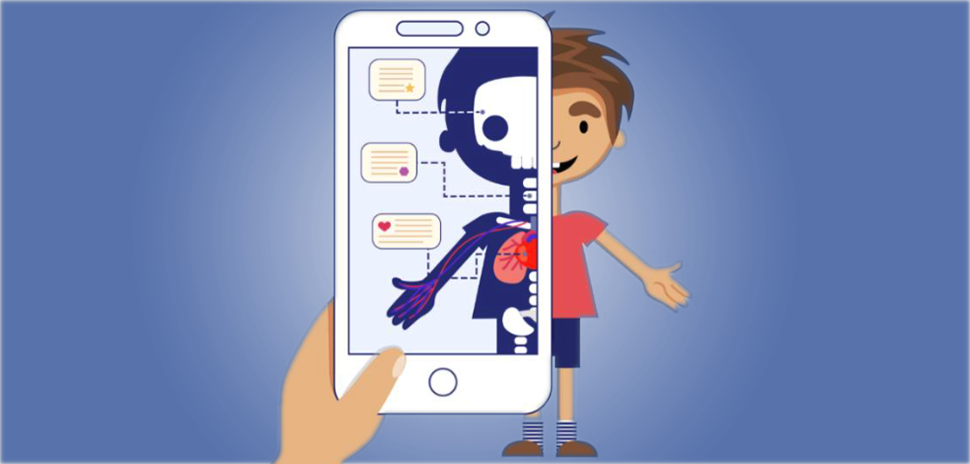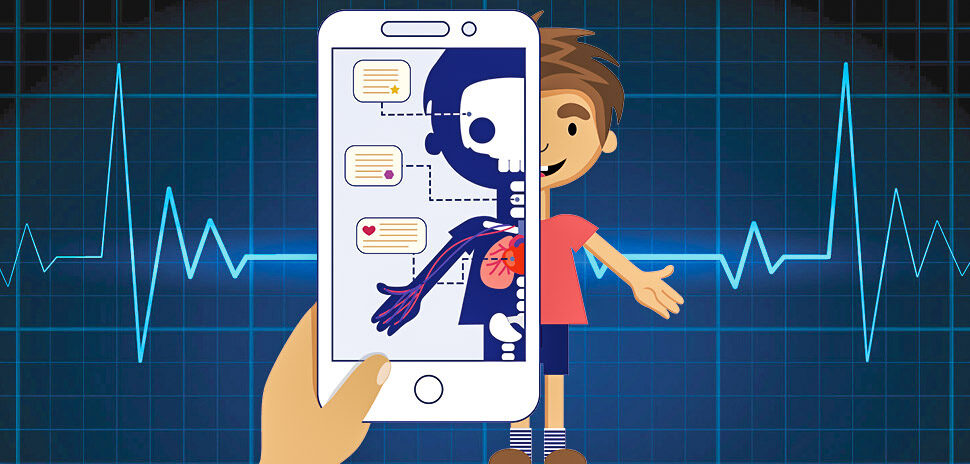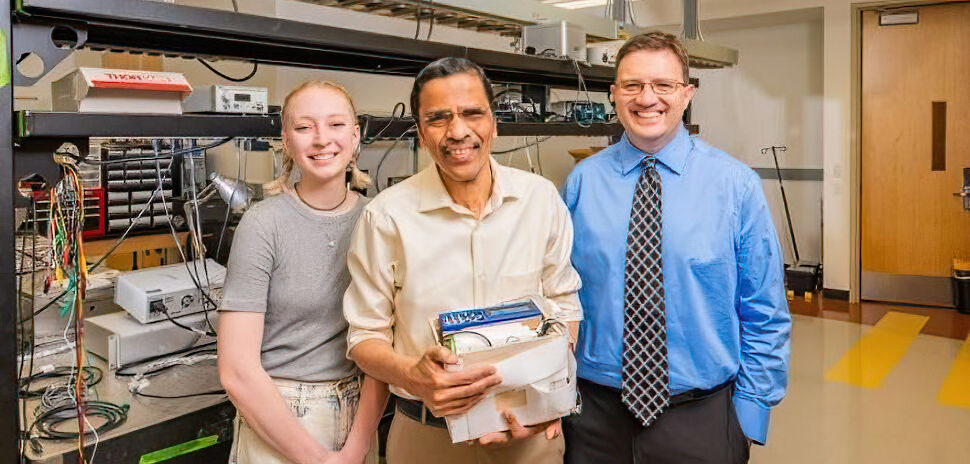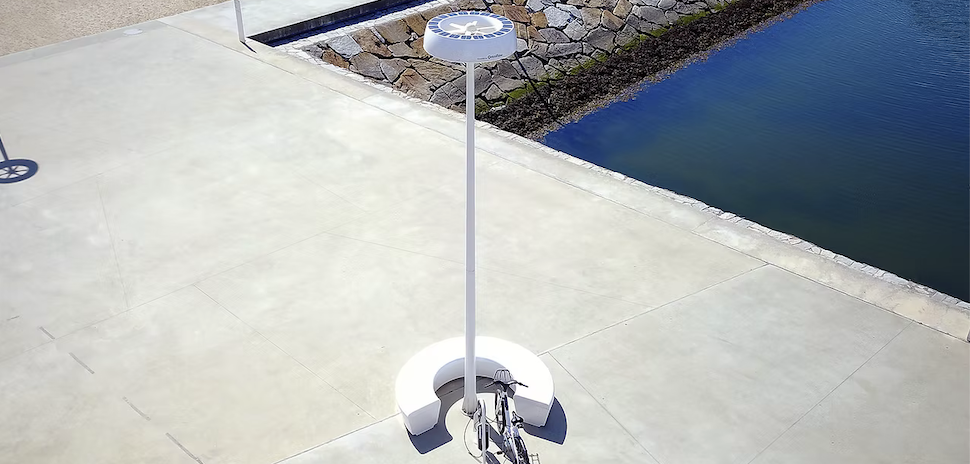On any given day, visitors to a nondescript industrial building in Plano might round a corner and come eye-to-eye with a clipboard-wielding man in a white coat — who isn’t really there.
What visitors actually see is a 3-D hologram of TelePresence Tech Director of Operations Jonathan Varrassi.
In the blink of an eye, the image of Varrassi can change into a giant, 3-D beating heart (or a host of other images), allowing medical professionals to explain their patients’ medical conditions at the most granular level, from nearly anywhere else on the globe.
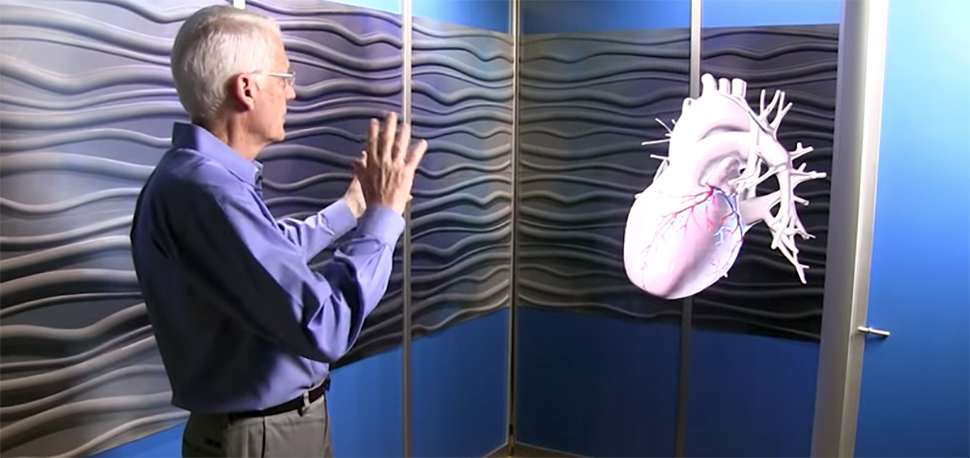
In the blink of an eye, the image of the doctor can change into a giant, 3-D beating heart (or a host of other images), allowing medical professionals to explain their patients’ medical conditions at the most granular level, from nearly anywhere else on the globe. [Image: Dallas Innovates video]
These visions are a herald of Texas’ new telemed law (SB 1107), which took effect on July 1.
Telemedicine — medical visits through a secured online video call — increases health care options for consumers, sparing them visits or even cross-country treks to health care providers’ offices. SB1107 created the legal framework for establishing a medical practitioner/patient relationship, via telemedicine. The passage of that bill allows the practice of telemed statewide without an in-person visit, expanding the legal use of the technology.
TelePresence Tech takes the online video call concept another step, melding more than a dozen American and European patents to tap into the workings of the mind:
• Using technology that aligns the capture and display of live digital images, to create a mutual line of sight, giving patients and doctors the sense of eye contact;
• Transmitting the life-size image of a health care provider, superimposing it into the examination room, and in the process, imparting to patients a sense of depth. This eliminates the need for 3-D glasses; and
• Streaming tech that allows patients to interact with a health-care professional who could be located anywhere in world (assuming they have access to high-speed internet service).
EYE CONTACT IS KEY ELEMENT OF TELEPRESENCE TECH
The crucial element to all this is eye contact, the way the technology’s inventor and TelePresence CEO Duffie White sees things.
Opponents to telemed in Texas have argued that physicians couldn’t properly examine patients without a face-to-face, in-person visit.
White cites studies that show the eye contact between doctors and patients — specifically, the eye contact his invention allows — as being crucial in assuring that patients are literally focused on the medical advice they’re receiving, and whether they will adhere to those instructions. In turn, physicians using White’s invention take part in a face-to-face evaluation, for better diagnosis and determination for treatment.
“This new legislation will have a dramatic effect on health care in our state.”
Duffie White
“Ninety-three percent of all communication is non-verbal,” said Varrassi, citing a study by Dr. Albert Mehrabian, author of Silent Messages.
White is literally the man behind the curtain, developing 3-D remote communications since the late 1990s, and holds more than 12 patents in the area. White said the new law will change the medical landscape in Texas.
“This new legislation will have a dramatic effect on health care in our state,” White wrote in an email to Dallas Innovates. “As a result, all the medical institutions in Texas will be reevaluating their approach to telemedicine.”
![Duffie White [Photo: Courtesy of Duffie White]](https://s24806.pcdn.co/wp-content/uploads/2017/07/3-telemed_DUFFIE_-White9703-telemed_970Duffie-White-pic102-copy-203.jpg)
Duffie White [Photo: By Dave Moore]
In the 85th session, legislators heard testimony from a variety of heath-care providers and business advocates, such as Texas Association of Business representative Amanda Martin, who said a survey of 600 Texans showed that 70 percent would prefer using telemedicine for handling common medical conditions. Many in the survey reported that they use emergency rooms as a last resort for medical care.
The tech White and others are developing counters two downsides of conventional medicine: expense (the U.S. now spends more than $10,000 per capita annually on health care) and unintended consequences (preventable hospital errors are the third leading cause of death in the U.S. ).
HOLOGRAPHICAL REALITY PORTAL PUTS DOC IN THE ROOM
White’s most-recent patent creates a telehealth exam room, where patients can interact with a health-care provider appearing life-size in the room while being transmitted from a medical center anywhere in the world. The aforedescribed “Holographical Reality Portal” is on display at Telepresence Tech’s Plano facility.
TelePresence Tech has installed hundreds of telepresence units in the U.S. and 30 other countries for uses ranging from financial services to teaching (and health care). The passage of SB 1107 opens the door further for expansion into Texas.
“In the era of telemedicine consults, there is no reason to wait weeks for an appointment,” cardiologist and professor of molecular medicine Eric Topol wrote in a recent essay in the Wall Street Journal. “For the same copay as an office visit, connection with a doctor can occur instantly or within minutes.”
“In the era of telemedicine consults, there is no reason to wait weeks for an appointment.”
Eric Topol
“With increasing use of patient-generated data from sensors and physical exam hardware that connects with a smartphone, the video chats of today will soon be enriched by extensive data transfer.”
Recently, Julie Hall-Barrow, vice president of virtual health and innovation at Children’s Health, said telemed is especially helpful in shielding vulnerable patients — such as small children — from bad outcomes.
“The worst place for a new mom is to bring a healthy baby into the emergency room,” she told a group gathered at a health-care tech symposium. “Let’s keep her there (at home).

